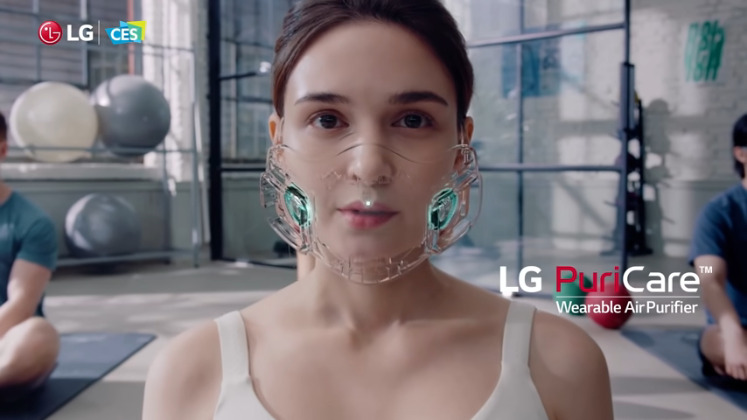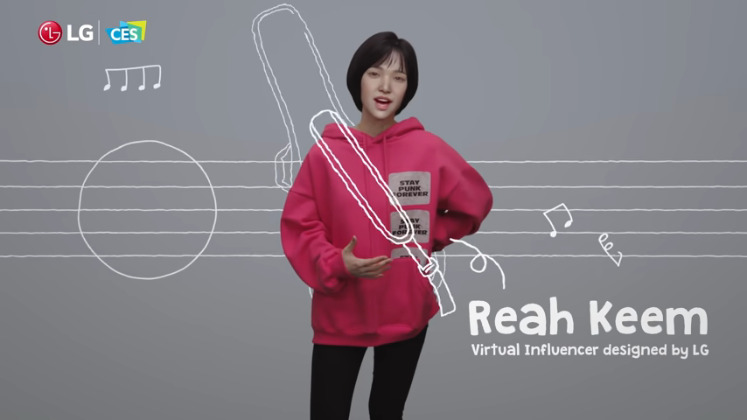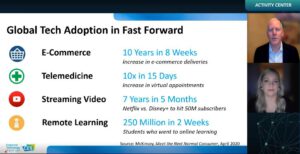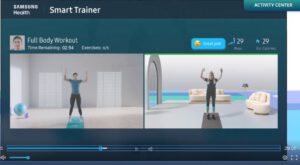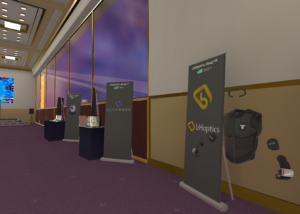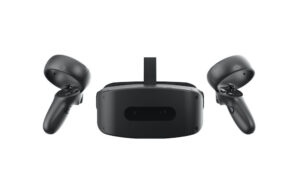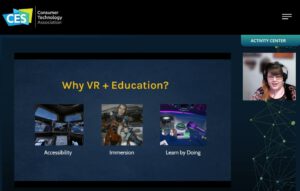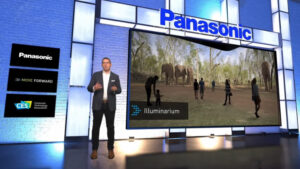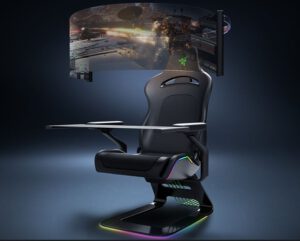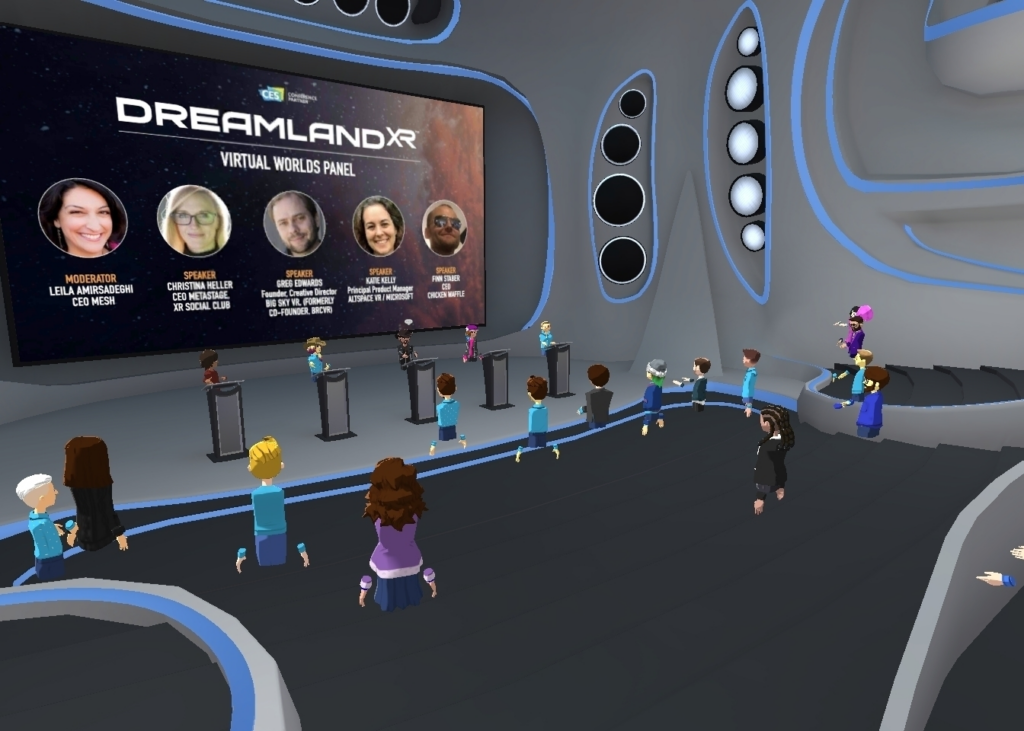COVID-19 marked this year’s annual Consumer Electronics Show deeply. CES went all digital with live broadcasting shows, brand promotion videos, online meetings and side events. Apart from the online screening concept for the whole trade show, many product presentations, trend observations and expert discussions reflected the ongoing pandemic situation in design, marketing and strategic positioning.
LG dedicated half of the product promotion to air cleaners, respiratory masks, robotic house-keeping, introduced by a virtual being as the presenter. The other half showcased their line-up of ‘eye-safety’ screen devices with interface designs for the ‘contactless era’. Samsung also focused mostly on kitchen and cleaning appliances for a safely automated hygienic home. Smart TVs now offer fitness apps for a lockdown work-out. Voice controls help to avoid skin contacts. Robots even keep your dog clean. The first day of corporate media presentations was an endless loop of polished advertisement videos, all continuously envisioning the blessings of a brave new world organization supported by consumer technology advancements.
Indeed, the pandemic seemed to have propelled this vision quite a lot, according to CES market researchers. But I was happy to see some human faces in Zoom panels on the next day, dedicated to expert panels and personal experience exchanges. The barking of dogs during the conference was a welcomed contrast to Media Day’s purified electronic hospital. Some unsorted cozy living room backgrounds with personal belongings, family pictures or a flag folded like a cocked hat on the shelf reconnected me to our present times. Tens of parallel video streams per hour alone revealed that we are living in interesting times, marked by contradictions and paradoxical twists.
Microsoft’s keynote on cybersecurity reflected the insecurity caused by recently discovered major national data leaks and referred to technological ventures in US history to recover the spirit – especially to Big Blue’s glorious era in the 1960s. NYT’s Thomas Friedman proposed to move from ‘deep’ technology to ‘open’ technology in the days when a silo-oriented tech oligopoly cut off the communication channels of the POTUS. The TV industry promoted 8K resolution displays although the common HD broadcasting signal does not even need 4K resolution. Hisense proclaimed that we all are now ‘people of the screen’ while acclaiming a laser-driven display technology that may well overcome our present understanding of what a screen can be.
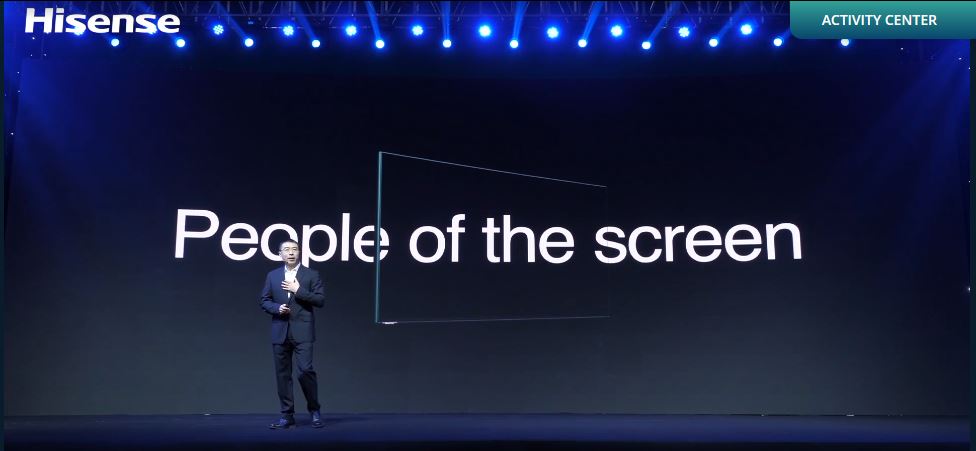
CES essentially is a presentation event for screen devices. Here, new hardware will be measured for its integration with existing platforms. This makes it difficult for VR, a medium where the screen endures only on a technical level while the perception already left the screen behind. Most VR presentations focused therefore on training applications. New ‘all-in-two’ headsets were connectable to smartphones and PCs as simple media viewers. Nolo introduced a new standalone device that beats the competition on an entry price level but needs hands-on testing to secure convincing tracking quality. This also holds for haptic input devices, headset accessories for reducing motion sickness and light-field display prototypes. You need to get a hand on that hardware.
Given the actual conditions, all innovations at this year’s CES had to be integrated with the screening framework, either by visualization, by conceptualization or by reduction. Panasonic went for the first option and showcased a theme-park attraction based on environmental projection mapping. Razor went for the second option by folding a screen around a gaming chair for a concept study. The globally restructured Sony Corporation focused on streamable content, contracted ‘immersion’ to a surround sound system and reduced ‘XR’ to a name tag for a TV chipset. The glimpse of a virtual concert event for all Sony distribution channels, including VR, may give us more options on which side of the screen we will gather in the future.
On the last day, you could visit CES partner events dedicated to special industry branches. DreamlandXR streamed introductory panels on immersive technologies for LBE, wellness, virtual beings and Esports. Attendees with a VR headset at home could join more analytic expert panels in AltspaceVR on virtual world events, music concerts and wearables. I also enjoyed the discussions on virtual production at Digital Hollywood as this event managed to present a well-balanced flow of conversation and information (with an excellent choice of music for the breaks). The Variety Entertainment Summit offered a deeper look into advertising and promotion strategies under streaming conditions. Video recordings, exhibitor sites and match-making services will stay on-demand long after the event has ended.
All Digital CES 2021 was a streaming event made by ‘people of the screen’ for ‘people of the screen’. The trade show does not necessarily give you an incentive for using or buying an immersive headset. In this form, it represents a culmination of screen-oriented media habits that will certainly not persist. Not only because the pandemic may be contained sooner than later, or because the digital-industrial complex may get opened up, but also because our habits will dissolve when we are going to pass through the declining era of the screens.

